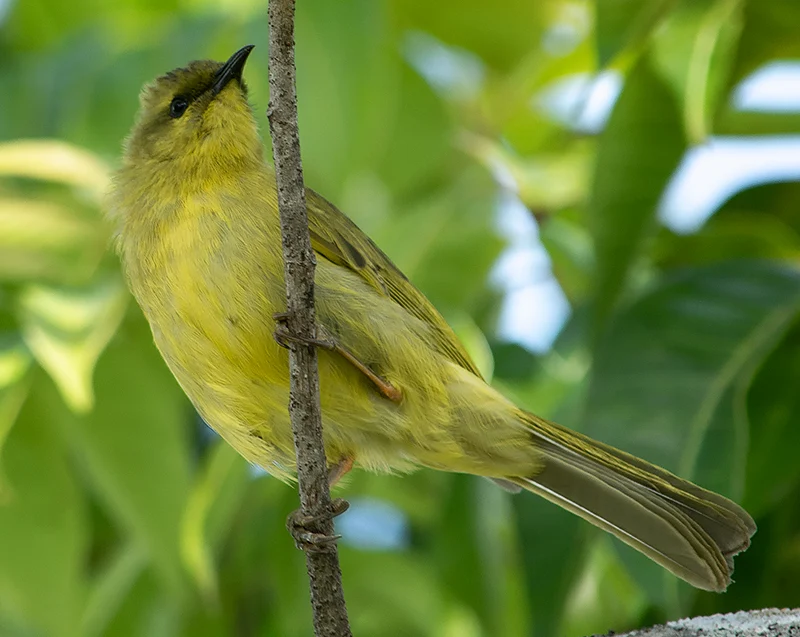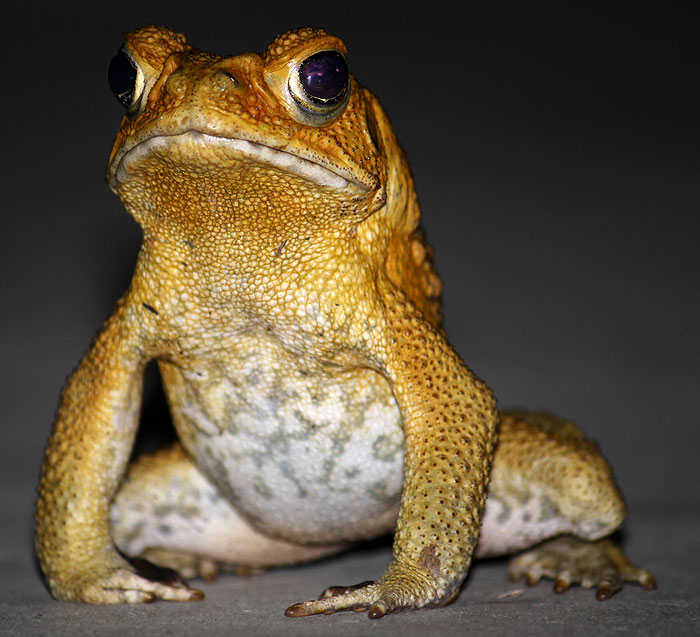Less than perfect photos
I have always endeavoured to create good content, or, at least - as good a content as my limited skills allow. But there's a price to be paid for striving for that elusive, and probably unattainable, 'perfect' photograph. Remember the guy who took 10,000 shots of kingfishers diving into the water, just to get the one shot he wanted?. Look, I mean - kudos, but 10,000 shots? - bugger me!.
Anyhoo, a few evenings ago I wandered outside, for no other reason than to take some air, when to my utter astonishment, there were three raptors - each sitting on an individual fence post. Obviously, I immediately dropped the air I was stealing, and bolted for the camera.
I gently slipped out the door again, relieved the birds were still around, and took a few steps in their direction. I might as well have brought a bloody brass band with me, because one by one, they each took fright and sprang into the air. Furious with myself, I went back inside to, rather energetically, do the dishes.
A few minutes later and I glanced out the kitchen window to be greeted by the sight of my elusive quarry. Happily munching away on a delicious - rodent like critter it had picked up for dinner. Covered in soap-suds, I considered my options - like in those Sherlock Holmes movies: Dry hands on shirt. Exit, front door - through car-port. Wheelie bin for cover.
I quietly slipped past the wheelie bin, disturbing a large skink in the process - startling us both!. Looking through the view finder from the range I had, I knew, any chance of a decent, detailed shot was highly unlikely. But I took it anyway ...
Admittedly, this could be Elanus axillaris, the Black-shouldered Kite - but I can't make out the yellow on the cere.
Of course, with such a 'soft' pic, perhaps I'm just not seeing it. I should also add that Elanus scriptus, has never been recorded this far north before, but if I've learnt anything observing wildlife - distribution accounts for almost nothing.
However, there's also an excellent chance, that I'm just wishing scriptus into being ... and I accept that too.
Sigh, ya can't win 'em all, was my first thought after reviewing the image. However, as I was researching the bird - it dawned on me that actually, the photo, even whilst grainy and soft - has merit.
So the bird itself might be rare and if it is, it's a predominantly nocturnal hunter. And, perhaps, I got a pic of it - in my backyard, having a feed?. Suddenly, an image that I was condemning and probably about to consign to the 'bin', took on new meaning and relevance. A win after all, eh?.
Of course, there are also the times when I take a photo, and have no great expectations of it turning out - simply based on the settings I'm using at the time. The light is always a factor, as well as the level of activity I'm trying to capture.
Occasionally, the 'chance' shot I'm attempting - turns out just the way I intended, or perhaps hoped, it would. There are also those times, when they don't. Many, many times TBH.
I don't think the Yellow honeyeater photo is terrible, I just always wish my pics were "better", this bird is really beautiful - and I don't think I've captured that. The species is on my list of birds I want to post about - so a little perseverance is the order of the day I guess. Then there are those times when the planets align, and the photography gods show some benevolence:
Is the Dusky honeyeater pic perfect?. No, 'course not. But it's good, and good - I'm starting to see, can be bloody great!. Speaking of great - I hope you and yours are. Thanks for taking the time to stop by.
Take care
Seemingly, someone complained about this post on my Facebook page, thus, the link was removed by that platform. I thought I had qualified the post with regard to the birds I.D ... but perhaps not enough for craven lunatics, suffering from the arrogance of certainty.
As I wrote in the original post:
I have qualified the post even further - for those who find reading and comprehension a bit of a challenge.
Anyhoo, a few evenings ago I wandered outside, for no other reason than to take some air, when to my utter astonishment, there were three raptors - each sitting on an individual fence post. Obviously, I immediately dropped the air I was stealing, and bolted for the camera.
I gently slipped out the door again, relieved the birds were still around, and took a few steps in their direction. I might as well have brought a bloody brass band with me, because one by one, they each took fright and sprang into the air. Furious with myself, I went back inside to, rather energetically, do the dishes.
A few minutes later and I glanced out the kitchen window to be greeted by the sight of my elusive quarry. Happily munching away on a delicious - rodent like critter it had picked up for dinner. Covered in soap-suds, I considered my options - like in those Sherlock Holmes movies: Dry hands on shirt. Exit, front door - through car-port. Wheelie bin for cover.
I quietly slipped past the wheelie bin, disturbing a large skink in the process - startling us both!. Looking through the view finder from the range I had, I knew, any chance of a decent, detailed shot was highly unlikely. But I took it anyway ...
 |
| Letter-winged OR Black-shouldered Kite? |
Admittedly, this could be Elanus axillaris, the Black-shouldered Kite - but I can't make out the yellow on the cere.
Of course, with such a 'soft' pic, perhaps I'm just not seeing it. I should also add that Elanus scriptus, has never been recorded this far north before, but if I've learnt anything observing wildlife - distribution accounts for almost nothing.
However, there's also an excellent chance, that I'm just wishing scriptus into being ... and I accept that too.
The letter-winged kite (Elanus scriptus) is a small, rare and irruptive bird of prey that is found only in Australia. Measuring around 35 cm (14 in) in length with a wingspan of 84–100 cm (33–39 in), the adult letter-winged kite has predominantly pale grey and white plumage and prominent black rings around its red eyes. It gains its name from the highly distinctive black underwing pattern of a shallow 'M' or 'W' shape, seen when in flight.
Sigh, ya can't win 'em all, was my first thought after reviewing the image. However, as I was researching the bird - it dawned on me that actually, the photo, even whilst grainy and soft - has merit.
This species is also the only nocturnal species within the order Accipitriformes despite few differences found in its visual anatomy to other closely related kites.
So the bird itself might be rare and if it is, it's a predominantly nocturnal hunter. And, perhaps, I got a pic of it - in my backyard, having a feed?. Suddenly, an image that I was condemning and probably about to consign to the 'bin', took on new meaning and relevance. A win after all, eh?.
Of course, there are also the times when I take a photo, and have no great expectations of it turning out - simply based on the settings I'm using at the time. The light is always a factor, as well as the level of activity I'm trying to capture.
 |
| Shake it baby! |
Occasionally, the 'chance' shot I'm attempting - turns out just the way I intended, or perhaps hoped, it would. There are also those times, when they don't. Many, many times TBH.
 |
| Yellow honeyeater |
I don't think the Yellow honeyeater photo is terrible, I just always wish my pics were "better", this bird is really beautiful - and I don't think I've captured that. The species is on my list of birds I want to post about - so a little perseverance is the order of the day I guess. Then there are those times when the planets align, and the photography gods show some benevolence:
 |
| Dusky honeyeater |
Is the Dusky honeyeater pic perfect?. No, 'course not. But it's good, and good - I'm starting to see, can be bloody great!. Speaking of great - I hope you and yours are. Thanks for taking the time to stop by.
Take care
Seemingly, someone complained about this post on my Facebook page, thus, the link was removed by that platform. I thought I had qualified the post with regard to the birds I.D ... but perhaps not enough for craven lunatics, suffering from the arrogance of certainty.
As I wrote in the original post:
Admittedly, this could be Elanus axillaris, the Black-shouldered Kite - but I can't make out the yellow on the cere.
Of course, with such a 'soft' pic, perhaps I'm just not seeing it. I should also add that Elanus scriptus, has never been recorded this far north before, but if I've learnt anything observing wildlife - distribution accounts mean almost nothing.
However, there's also an excellent chance, that I'm just wishing scriptus into being, and I accept that too.
I have qualified the post even further - for those who find reading and comprehension a bit of a challenge.
The letter-winged kite was described by ornithologist John Gould in 1842 under its current binomial name Elanus scriptus. The specific epithet is from the Latin word scriptum, meaning "written" or "marked". British explorer Charles Sturt wrote of seeing them on his travels in his 1849 book Narrative of an Expedition into Central Australia. The letter-winged kite is monotypic: no subspecies are recognised, nor is there any recorded geographic variation.
The Black-shouldered kite (Elanus axillaris), also known as the Australian black-shouldered kite, is a small raptor found in open habitat throughout Australia. It resembles similar species found in Africa, Eurasia and North America, including the black-winged kite, a species that has in the past also been called "black-shouldered kite".
The Black-shouldered kite (Elanus axillaris), also known as the Australian black-shouldered kite, is a small raptor found in open habitat throughout Australia. It resembles similar species found in Africa, Eurasia and North America, including the black-winged kite, a species that has in the past also been called "black-shouldered kite".






Comments
Post a Comment